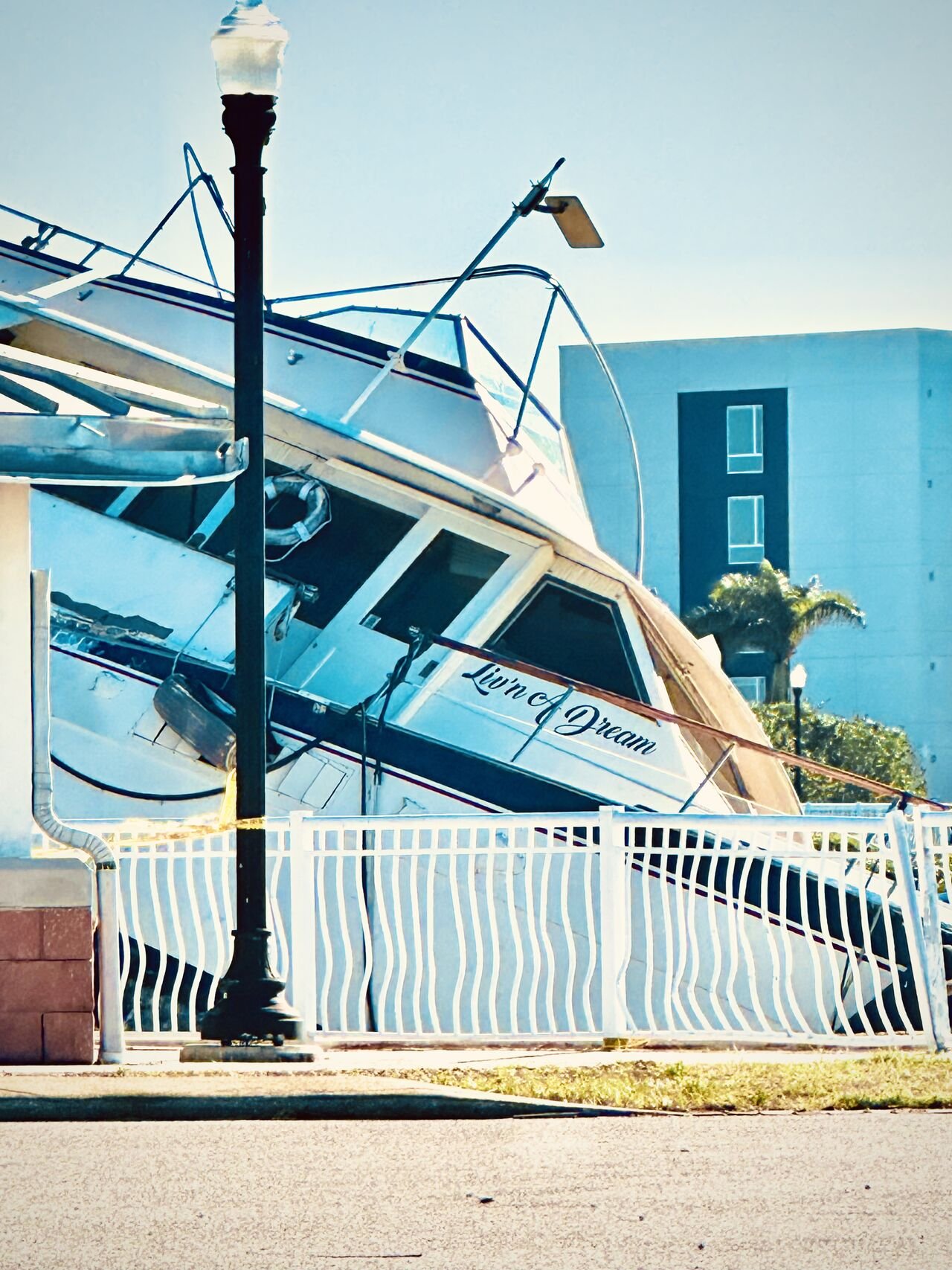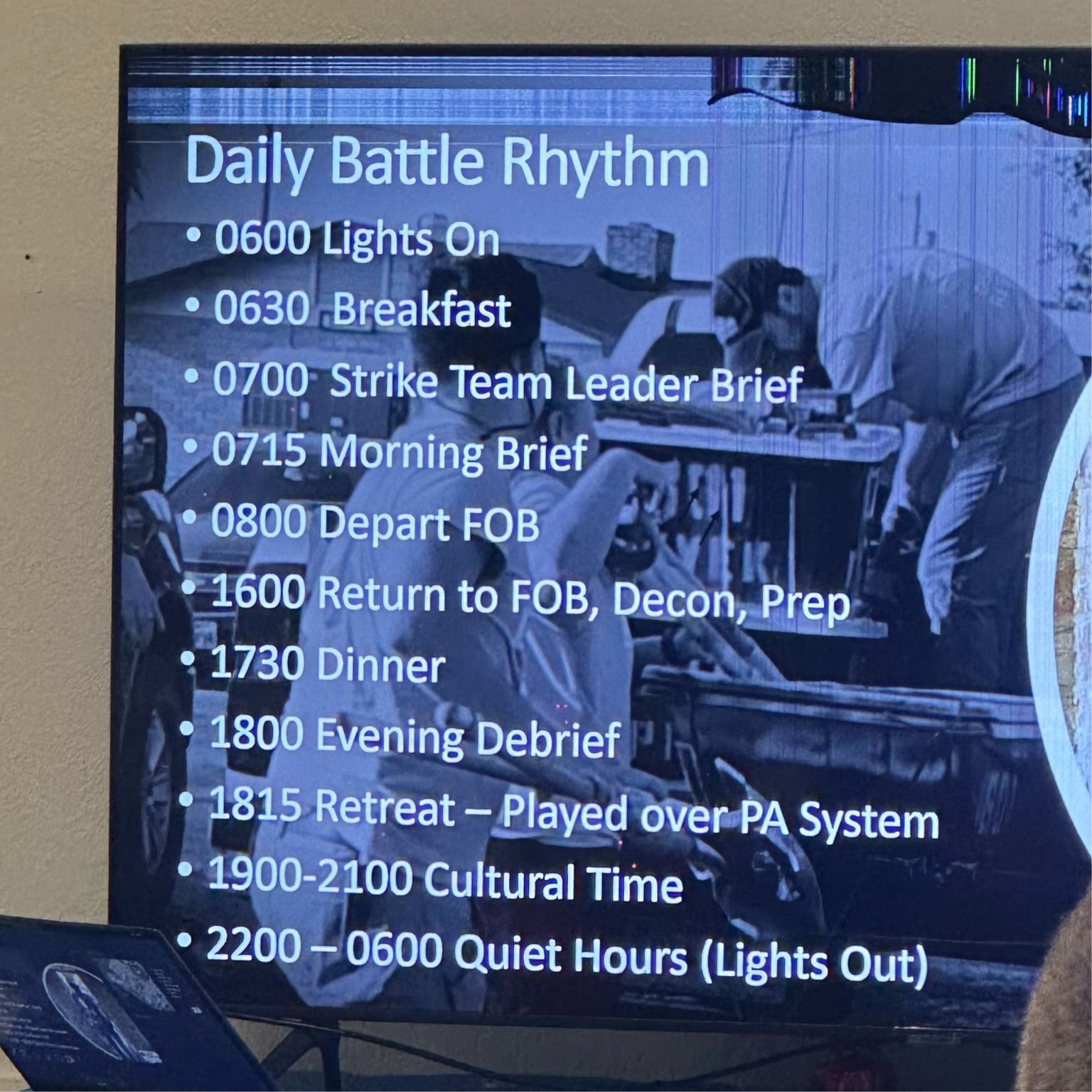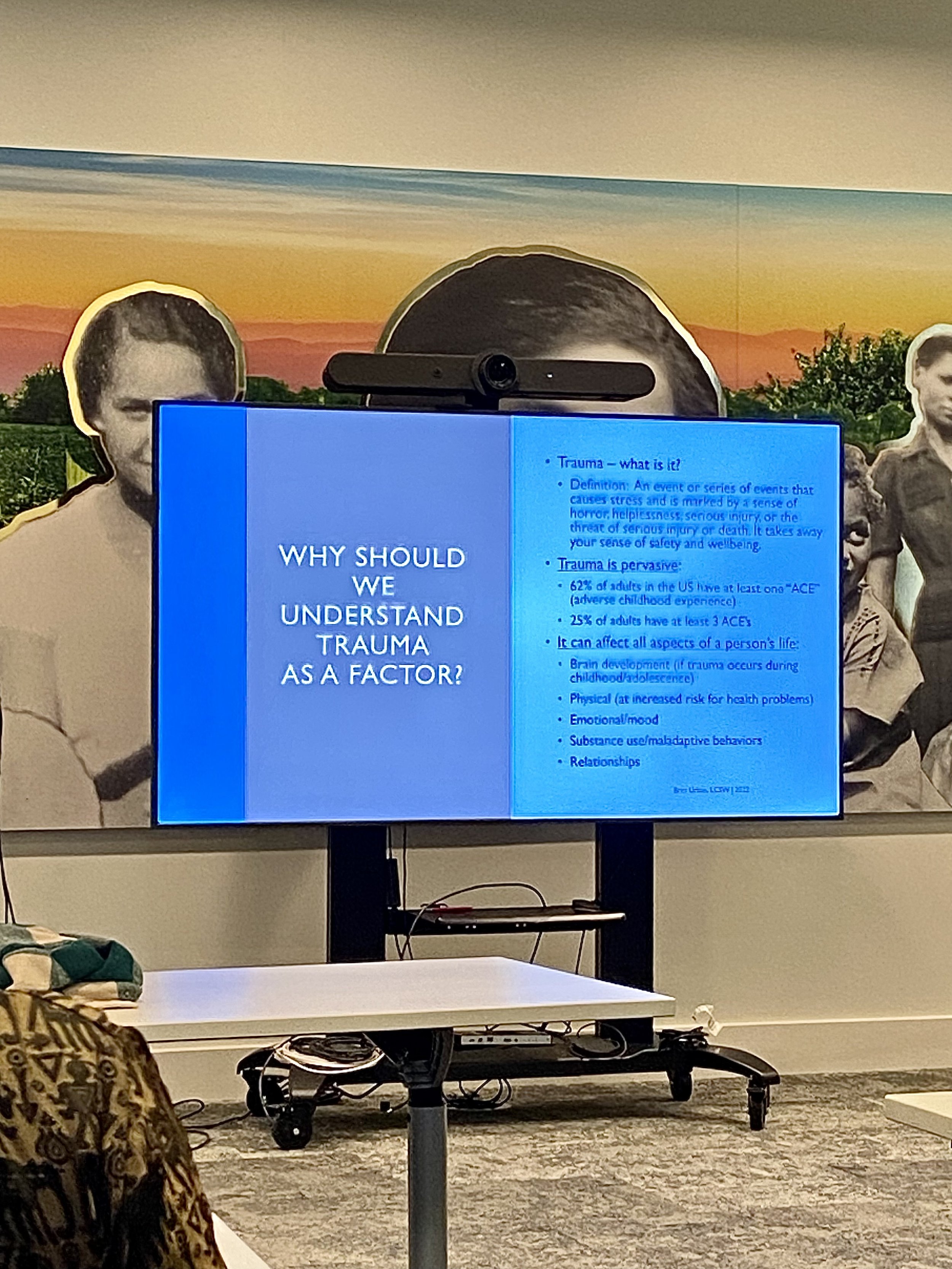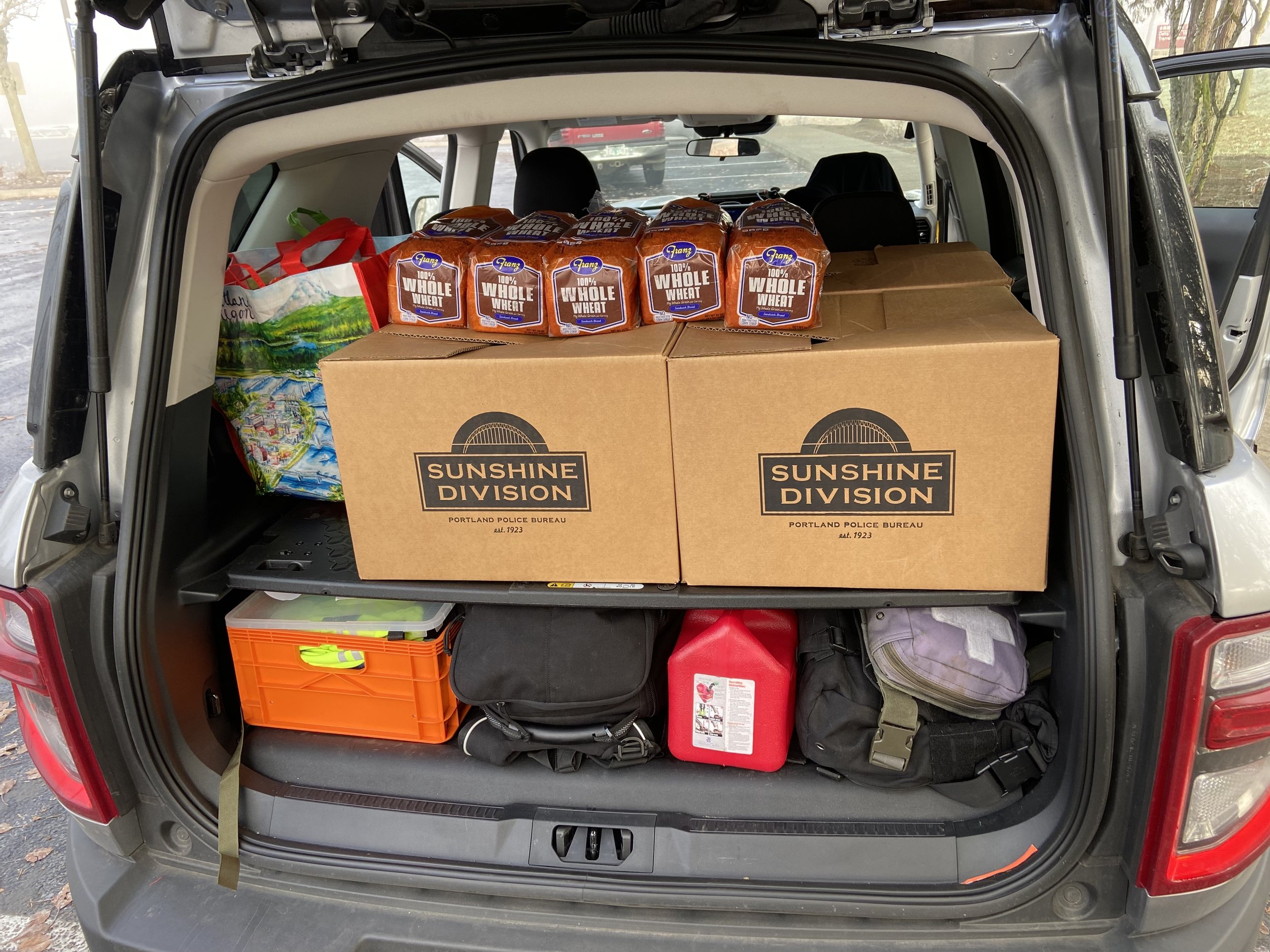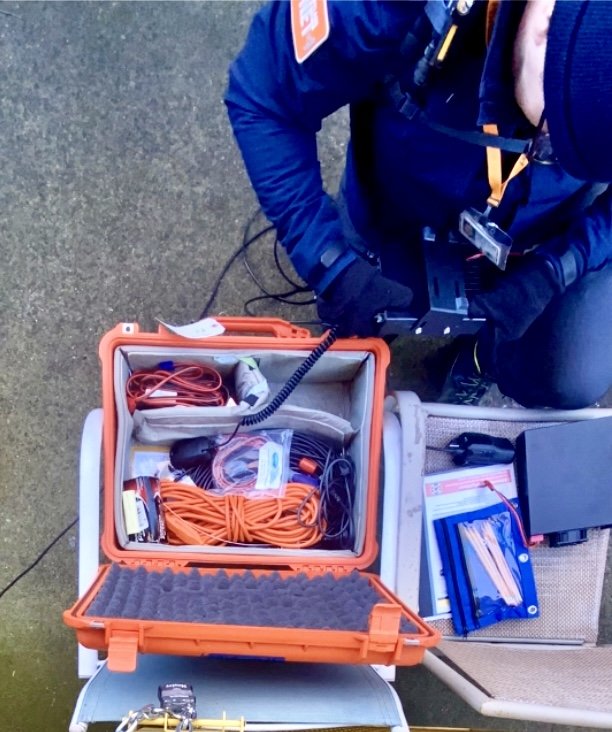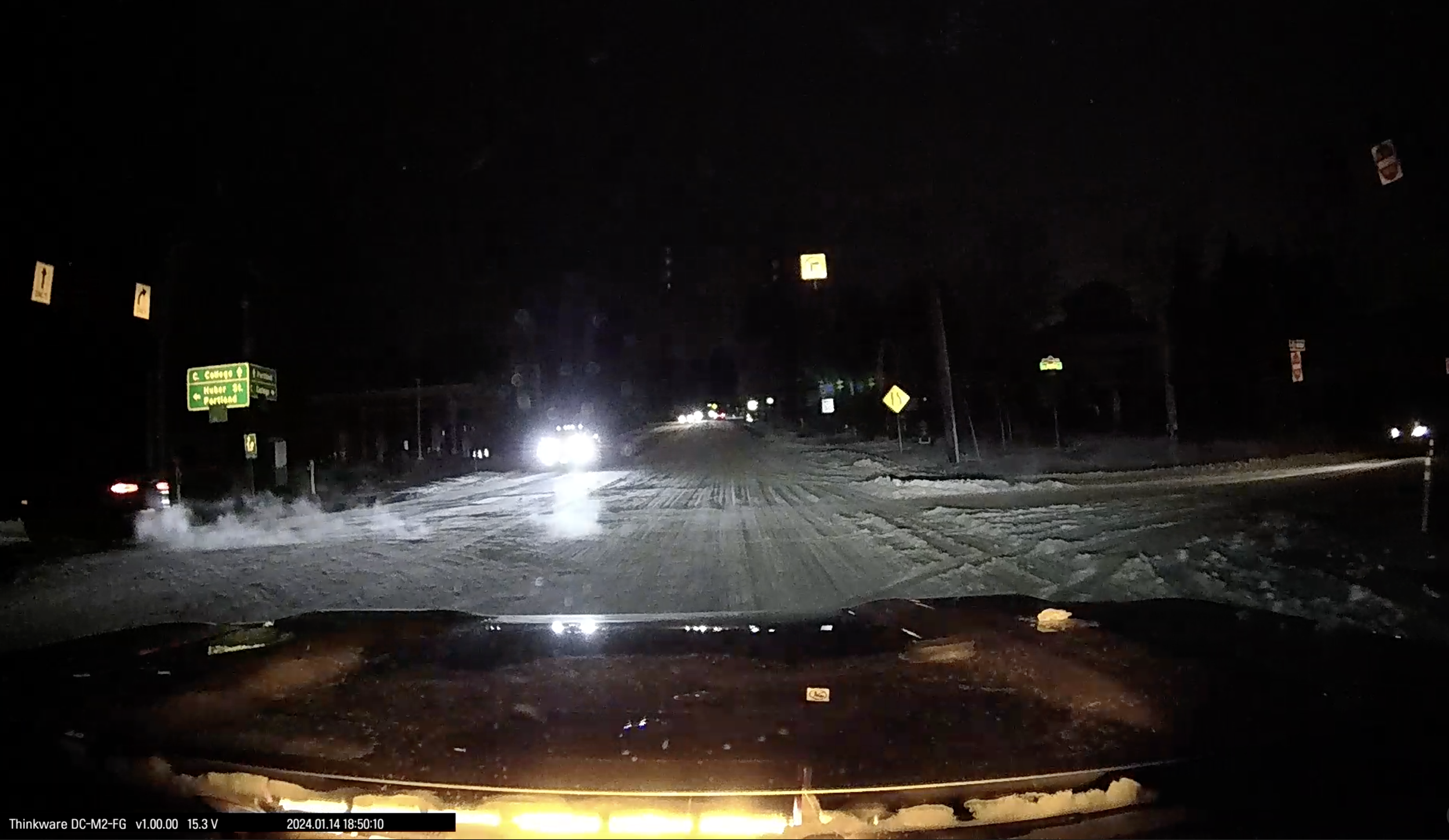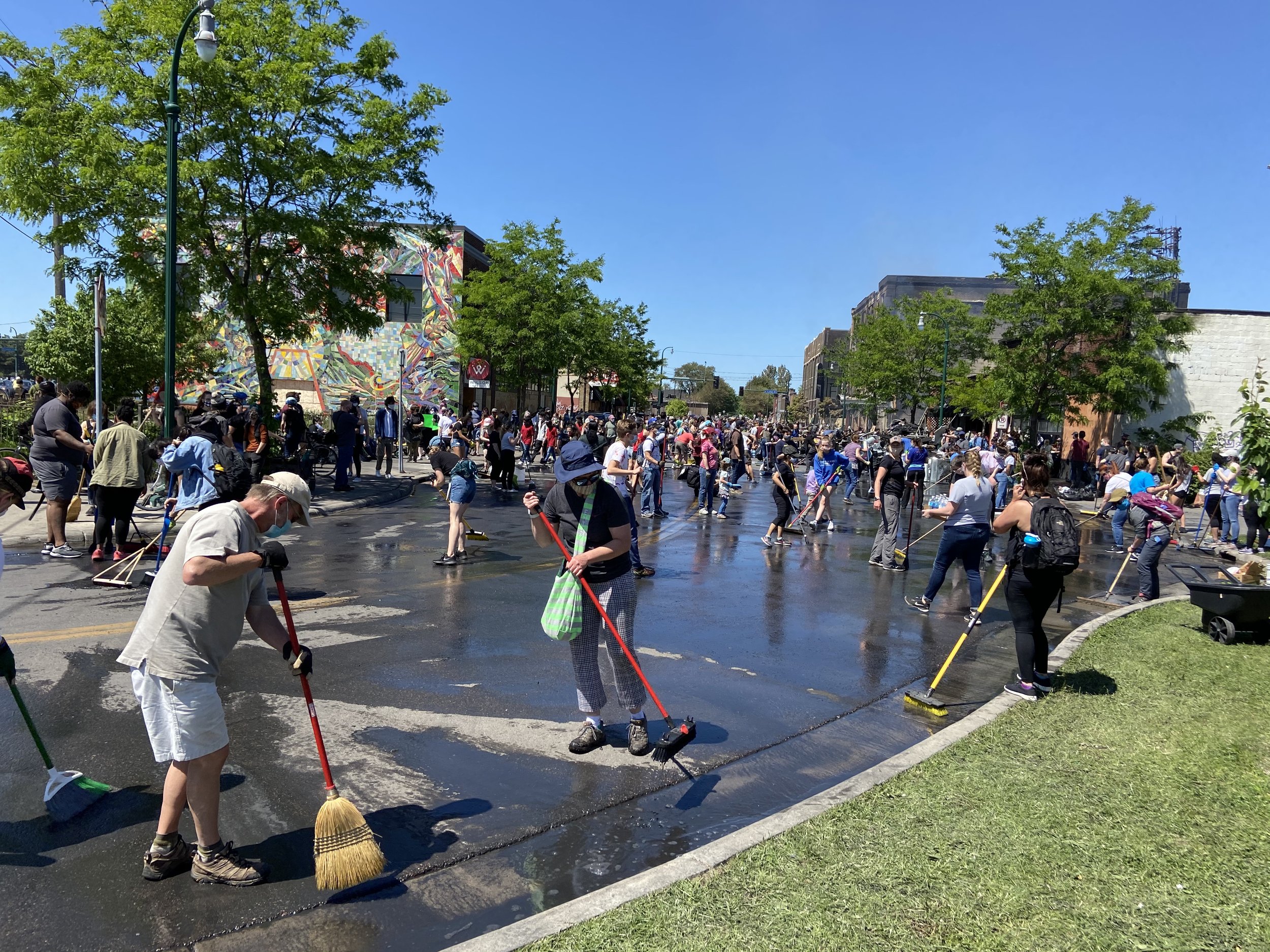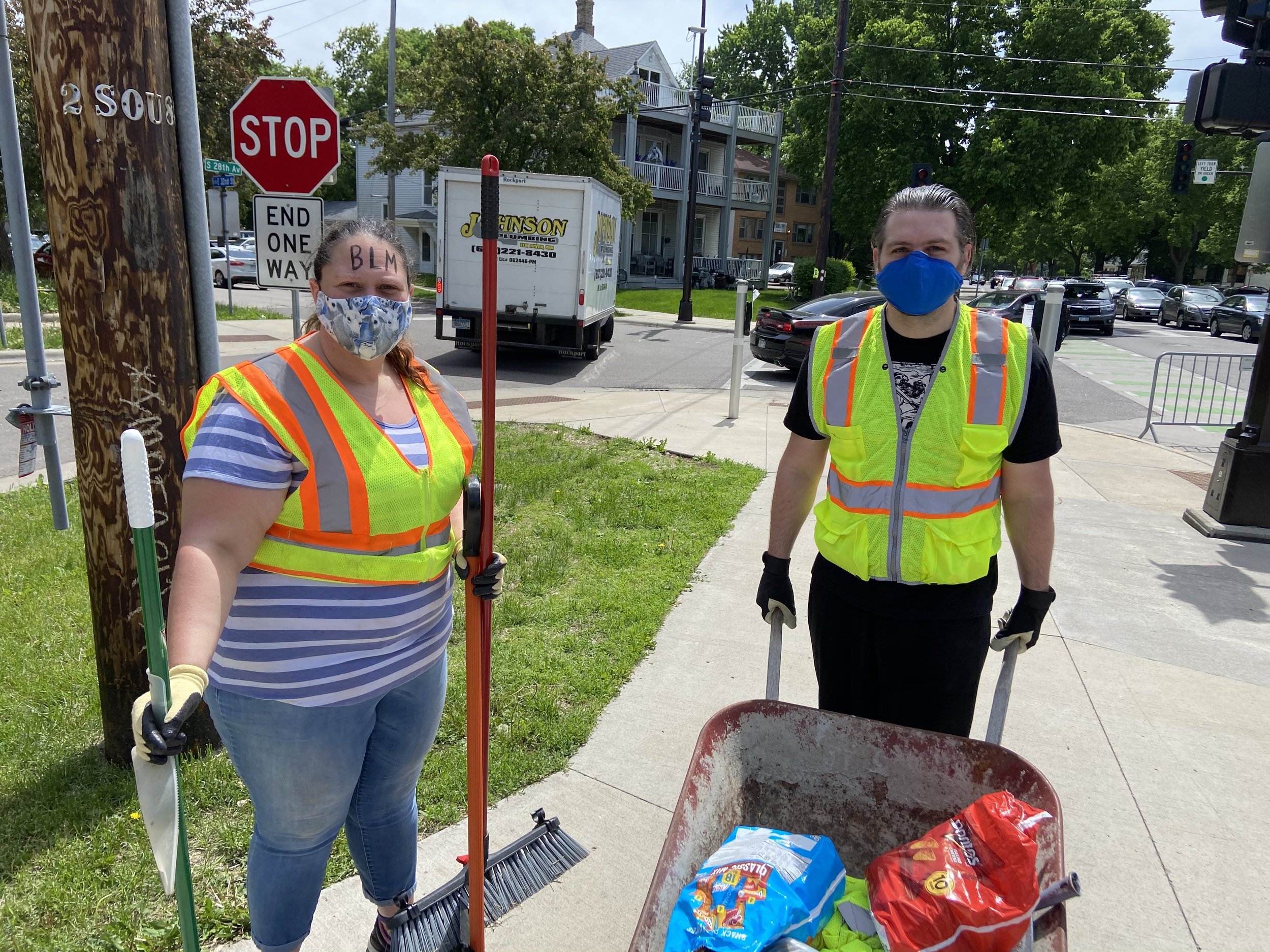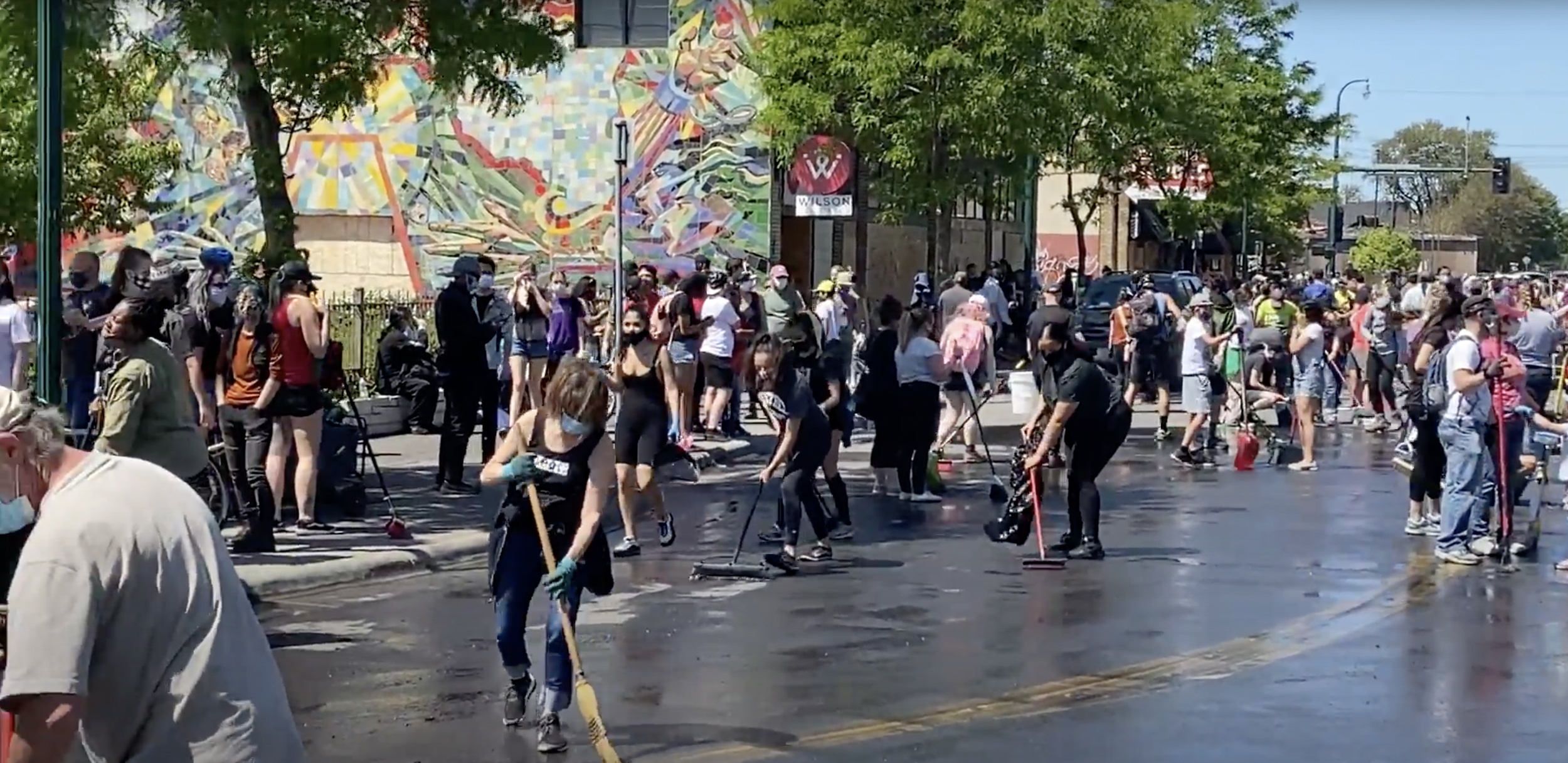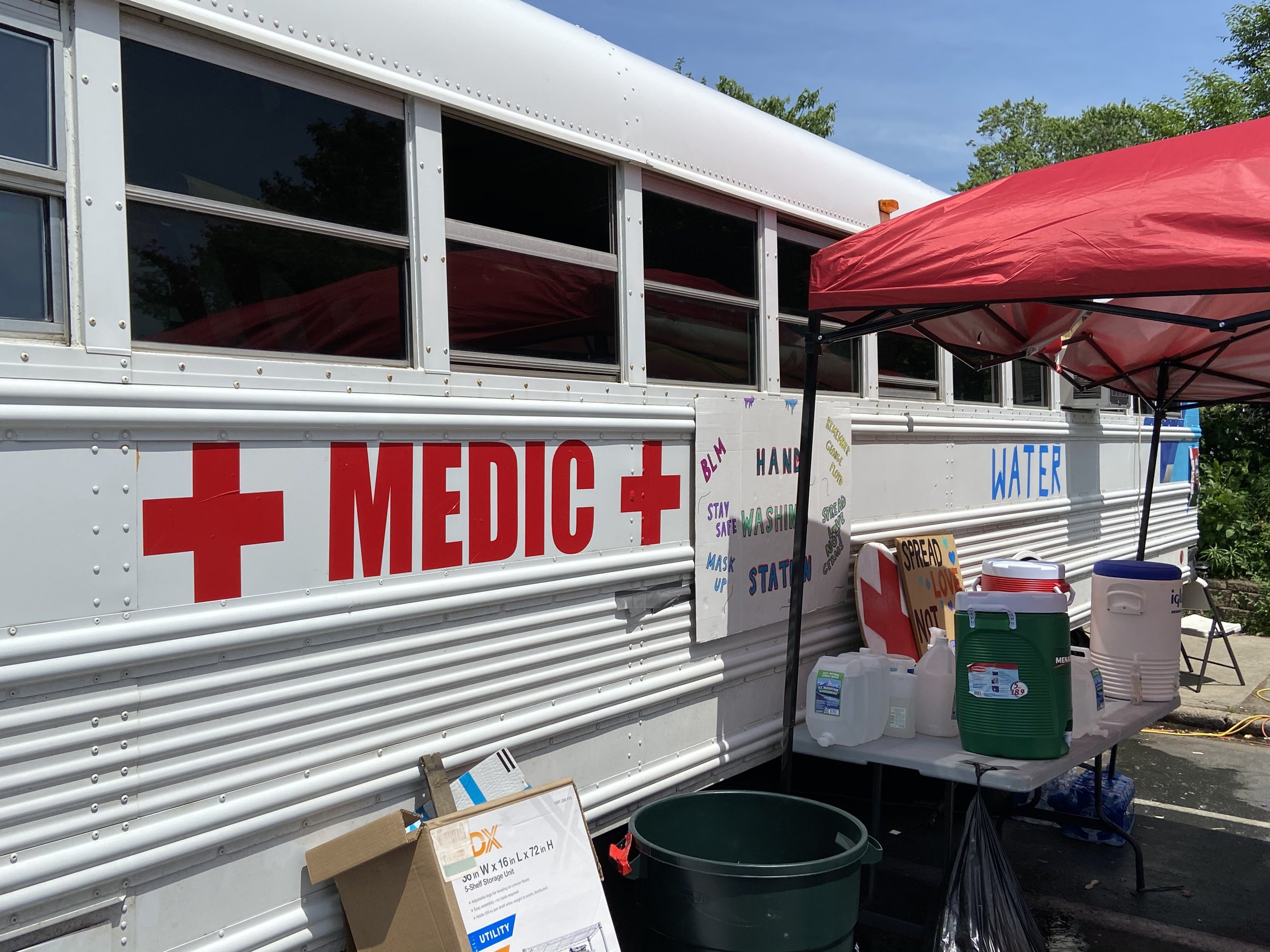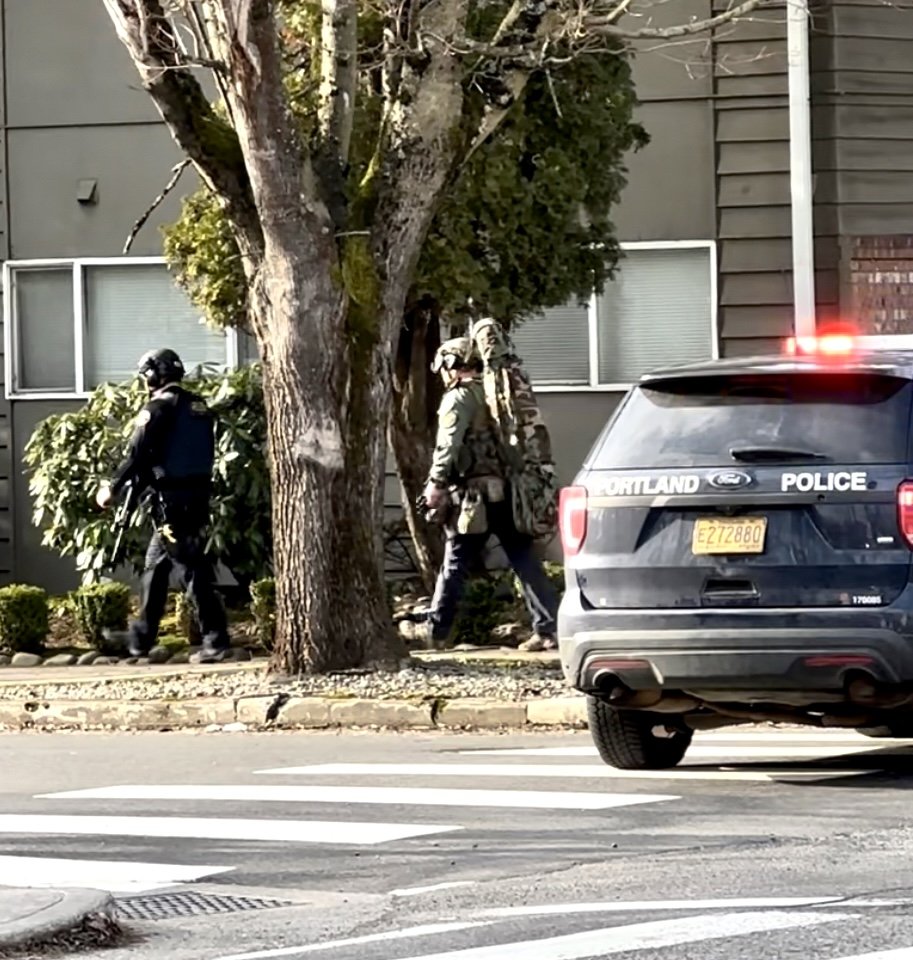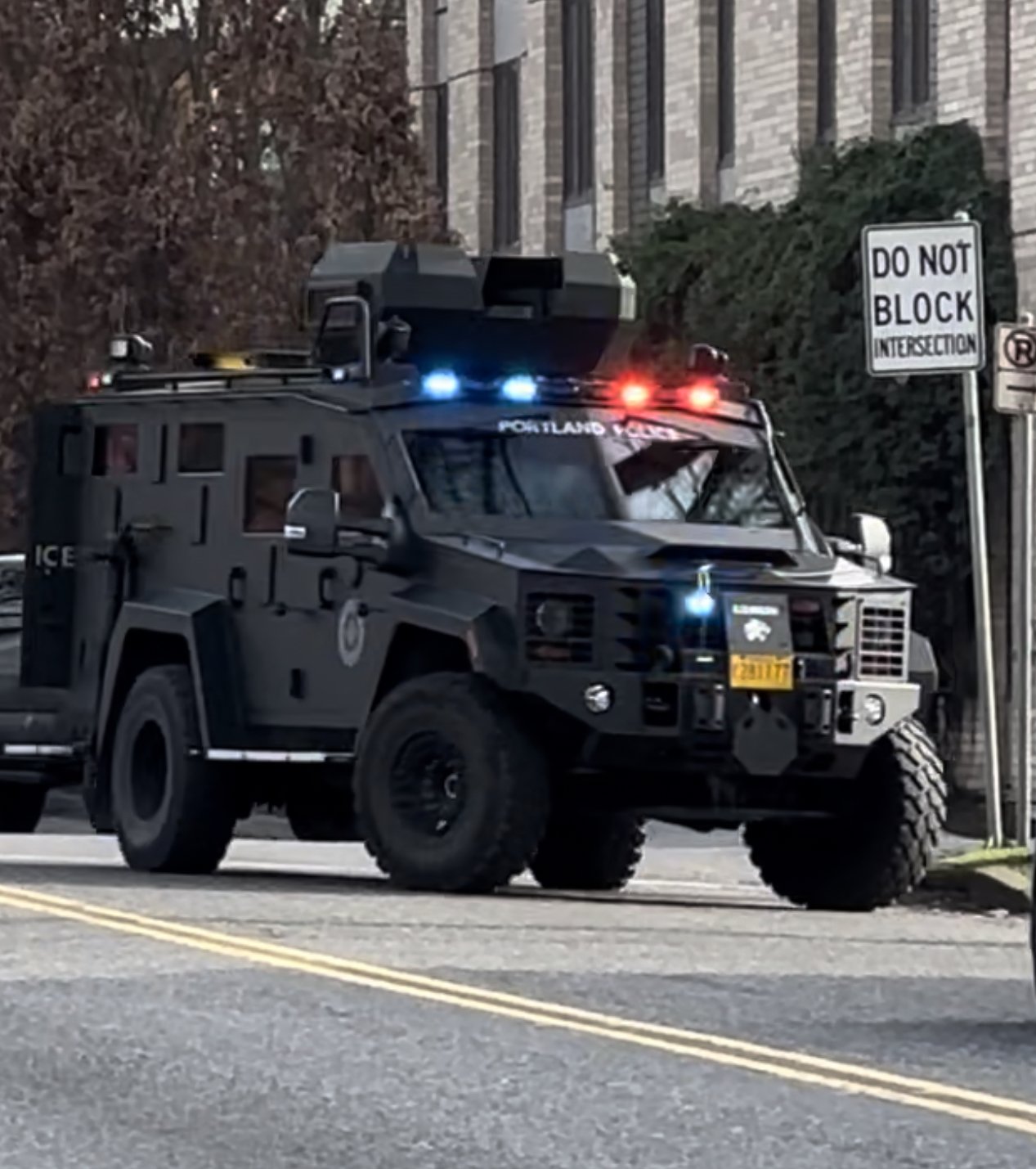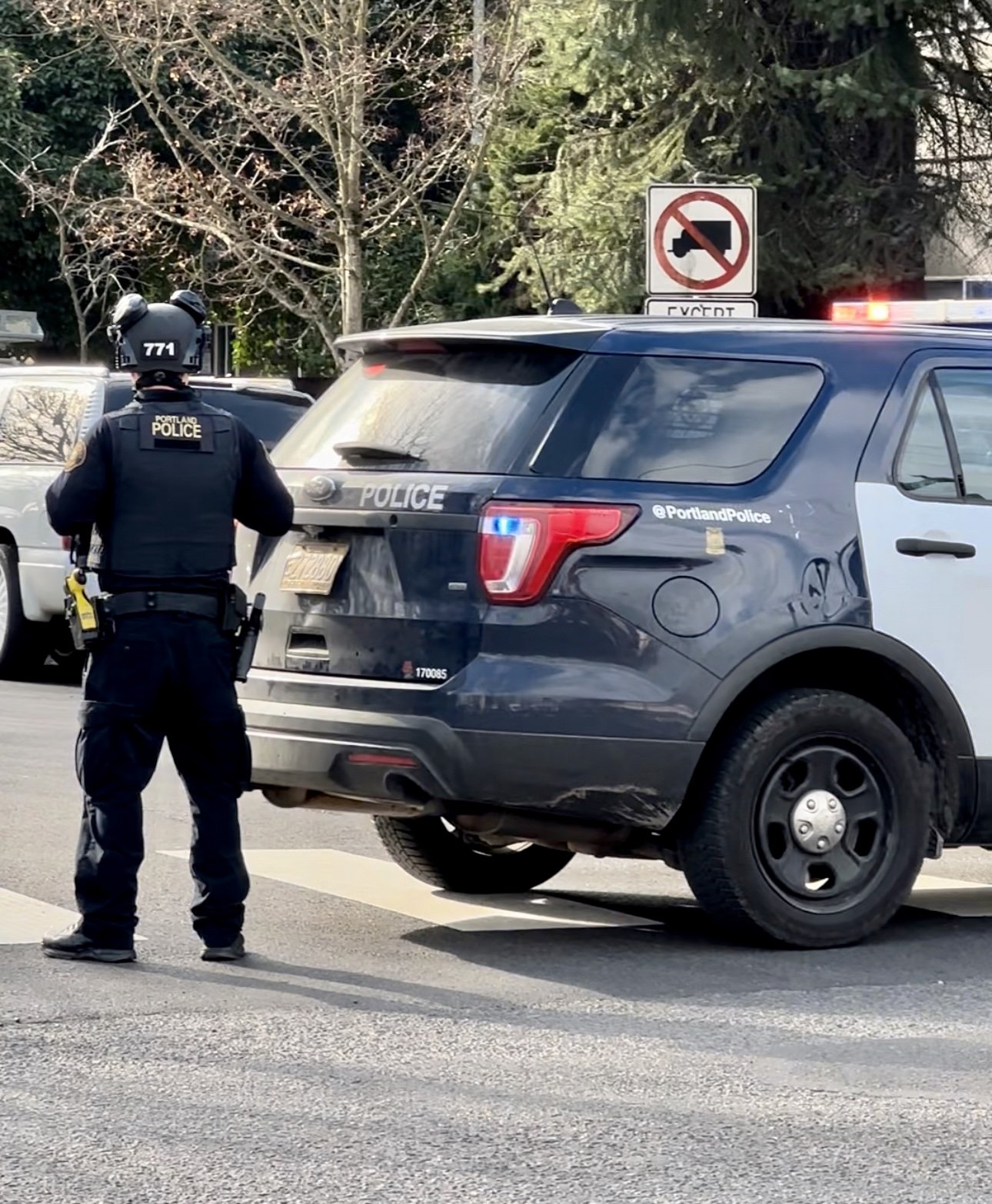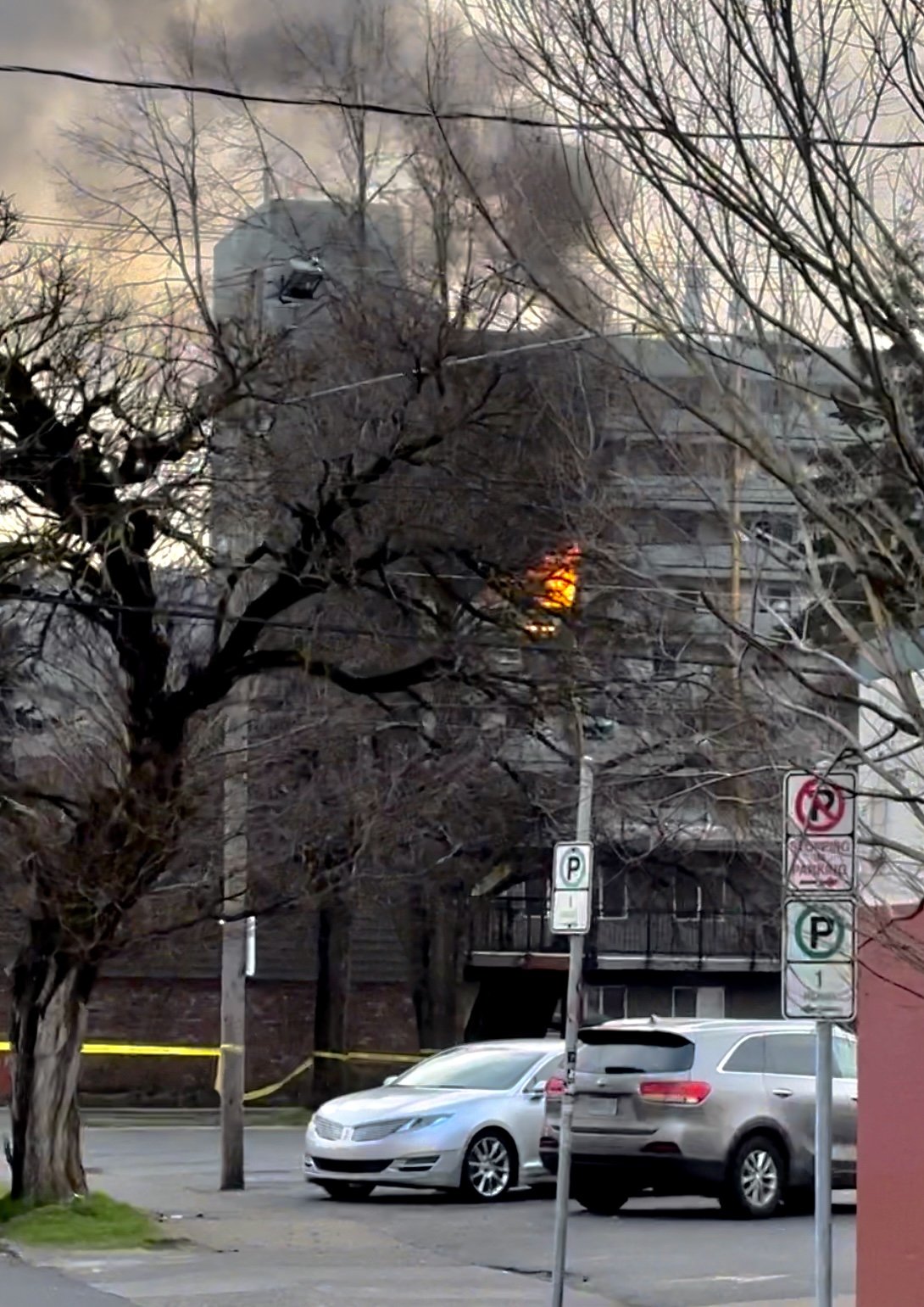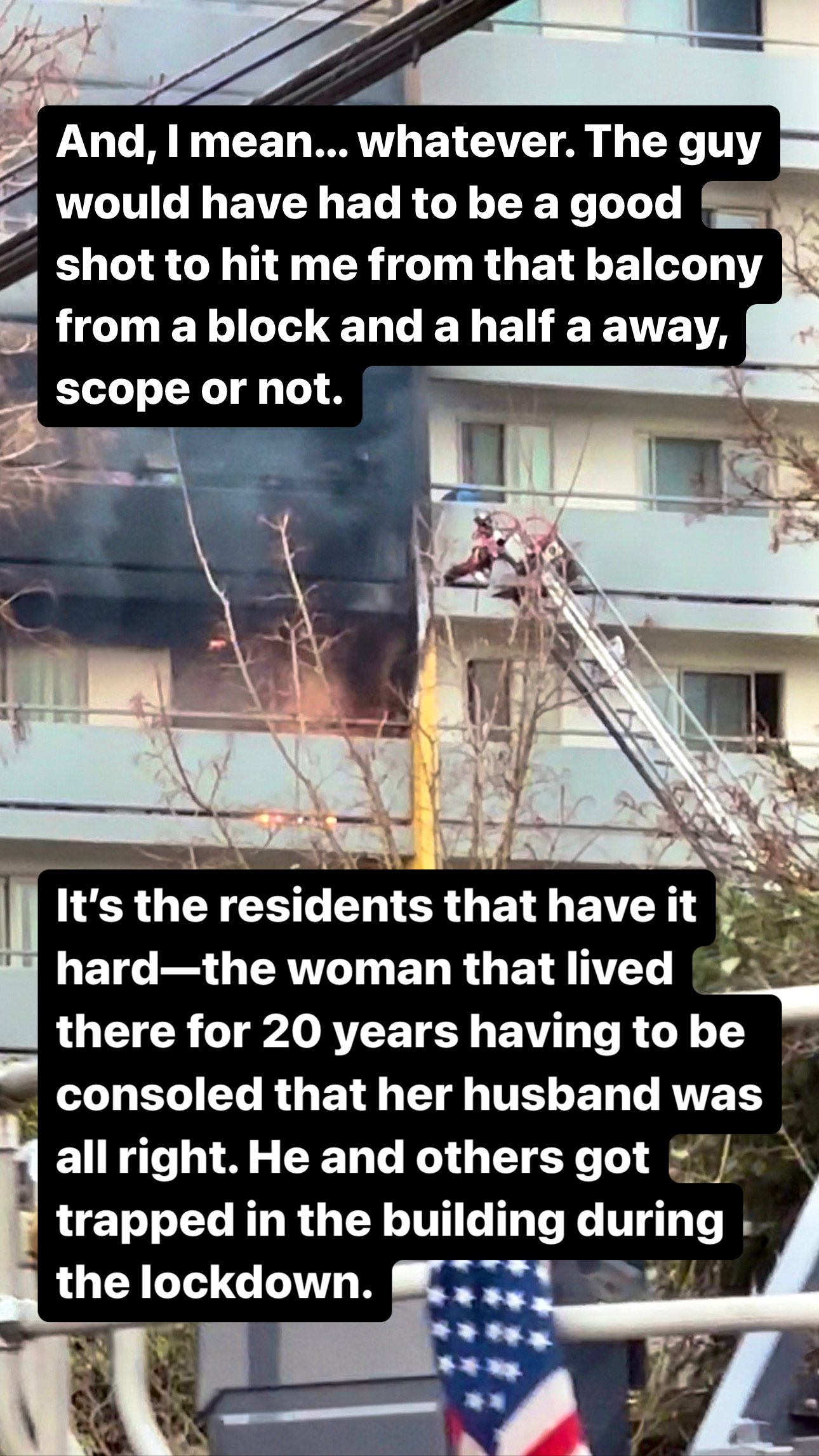CIVISM
Serving my community
TRAINING
Annual Citywide Deployment Exercises (CDEs)
Annual Mass Casualty Drills at the Portland Police Bureau Scenario Village
Bleeding Control Basic v 1.0
CPR and AED Certification through the American Red Cross
De-escalation with Portland Street Response
Downed Power Line Training
G2304: Emergency Operations Center Planning Support Skillset Course
G2308: EOC Operations and Situational Awareness Skillset Course
HAZMAT Awareness Training
IC-21.25: Civil Rights and FEMA Disaster Assistance 2025
IS-100.C: ICS-100 Introduction to Incident Command System
IS-200.c: ICS-200 Basic Incident Command System for Initial Response
IS-300.c: ICS-300 Intermediate ICS for Expanding Incidents
IS-315.a: CERTs and the Incident Command System (ICS)
IS-317.a: Introduction to Community Emergency Response Team (CERTs)
IS-400.c: ICS-400 Advanced ICS Command and General Staff
IS-700.b: Introduction to the National Incident Management System
IS-800.d: National Response Framework, An Introduction
IS-907: Active Shooter
IS-2200: Basic Emergency Operations Center Functions
Mental Health First Aid with the National Council for Mental Wellbeing
National Weather Service: SKYWARN Basic Spotter
Psychological First Aid
Team Rubicon: Conflict De-escalation
Team Rubicon: Harassment Prevention for Volunteer Leaders
Team Rubicon: Introduction to Logistics
Team Rubicon: Introduction to Operational Planning
Team Rubicon: Recon/ADVON
Team Rubicon: Responding to Gender-based Violence
Team Rubicon: Site Safety
Team Rubicon: Site Survey
Team Rubicon: Chainsaw Operations I (2-Days In-Person)
Traffic Control
Wilderness/Remote Location First Aid through the American Safety and Health Institute
AFFILIATIONS
-
I am a volunteer emergency responder with Portland NET (Neighborhood Emergency Teams). NETs are trained for disaster response with an emphasis on light search and rescue, field first aid, basic fire suppression, and the Incident Command System.
NETs deployments as directed by Portland’s Bureau of Emergency Management. Deployments may involve cordoning off downed power lines on behalf of Portland Fire & Rescue, pulling shifts at the Emergency Operations Center, running warming/cooling shelters, and much, much, more.
We train in citywide deployment exercises, practice mass casualty drills at the Portland Police Bureau’s Training Division, and conduct radio system tests for Portland’s BEECN network.
-
I am currently a volunteer disaster responder with Team Rubicon. Team Rubicon is a veteran-led humanitarian organization serving global communities before, during, and after disasters and crises.
-
I’m currently lending my free time to the City of Portland as an advisory committee member overseeing the formation of a new bureau that will centralize and coordinate public safety bureaus. I was motivated to join the board after living through the events of 2020 in Minneapolis. I want to ensure equity in terms of emergency response for all in Portland. When our safety bureaus better represent and understand the diverse population of our city, we will see better outcomes. Much work must be done with regard to building trust and outreach—some of which may be achievable by changes I’ve proposed. Implicit bias coming from someone within a bureau rather than an external trainer may make that material relatable to the professions in question. The introduction of deputy chief roles could permit bureau chiefs to focus on long term goals while deputies handle day-to-day operations. And an improved reporting systems for employees experiencing discrimination or inappropriate behavior in the workplace may help better align bureaus the mission, vision, and values.
We also want to send the correct resources to emergency calls. The City of Portland currently has overworked and understaffed bureaus responding daily to issues created during the pandemic involving addiction and houselessness. Much of this stems from systemic problems created by decades of underfunding mental health systems and the high cost of housing—which are not issues a first responder can address. Repeatedly sending first responders to solve matters they cannot resolve is creating a sense of moral injury. And not every call necessitates a police offer or firefighter. It is our hope that we will be able to direct more specialists to low acuity calls where a crime is not being committed. Alternative responders like CHAT or PSR will likely continue to be leveraged to offload some of that work from primary public safety bureaus. -
The FBI Citizens Academy was an eight-week program providing business, religious, civic, and community leaders an inside look at the FBI via our local field office.
Candidates are nominated by FBI employees, former Citizens Academy graduates, and community leaders. Participants are selected by the special agent in charge of the local FBI field office.
Curriculum included:FBI 101
Legal
Civil Rights
Public Corruption
White-Collar Crime (which covered one of my former employers)
Organized Crime
Violent Crime
Threat Assessment Group
Digital Forensics
Cyber Crime
Crypto
Domestic Terrorism
International Terrorism
All of which was capped with a Range Day.
-
The Independent Investigations Group Northwest was a volunteer group founded by the Center for Inquiry. The James Randy Foundation offered a $100,000 prize to anyone who could demonstrate—under proper observing conditions—evidence of any paranormal or supernatural.
Our task was to test the claims of people purporting to have, say... psychic abilities. If they proved to be legit, that claimant would get the hundred k, and we'd have an exciting new realm of scientific inquiry to explore. If they failed, we'd all get better at detecting those with delusions, mental health issues, slight of height experts, and flat out con artists.
The first step was an informal demonstration of the claimed ability or phenomenon, which if successful would be followed by the formal test with conditions that both the claimant and investigate group agreed upon.
My job was conducting background checks (which I learned to do while acting as a building manager back in Milwaukee).
We spoke with a few people with claims, but that's as far as it ever went. Claimants would say they could absolutely win the hundred grand wit their abilities. It seemed that someone them were really after the legitimacy of talking to investigators about their alleged powers without ever having them confirmed or denied. -
I was elected on to a neighborhood board back in 2008. I served as the Safety Liason between the Milwaukee neighborhood and 5th District Police Department.
I would attend monthly crime analysis meetings at the police station and relay what I learned back to our neighborhood group—mainly crime trends, what vehicle make and models were should warn residents were likely to be broken in to, etc.
I and fellow board member Howard briefed WISN on camera after two young men (Nathan and Devante) were shot during separate robberies in the neighborhood.
I also put together a Public Safety Seminar for the community through the generous help of martial arts instructor Michael Coleman. The class provided residents with numbers and agencies to call, taught situational awareness, demonstrated ways to avoid conflict, methods of evasion, ways to secure one's hone, and common scams to avoid. -
I took an eight-week course with the Milwaukee Police Department in Milwaukee, WI to better understand how the police department works. I was part of the Riverwest Neighborhood Association at the time, and filled the role of Safety Liason to MPD’s 5th District.
This course helped me understand the difficulties of the law enforcement officer’s job, staffing levels of our district, the specific public safety concerns affecting my neighborhoods, and generally helped me to better interface with the police department.
I also joined a sergeant for a ride along on third shift, in which I helped direct responding officers to the correct address and location of an individual that had attempt to break and enter an home.
Topics covered in the course included:Community Engagement & Programs
Ethics in Law Enforcement
Community Engagement & Programs
Criminal and Traffic Law
Crime Analysis
Search Warrants
Principles of Arrest
Defense and Arrest Tactics (DAAT)
Emergency Vehicle Operations Course (EVOC)
High Risk Traffic Stops
Vice Control Division (VCD)
Tactical Enforcement Unit (TEU)
Intelligence Division
Communications Division
Incident Command System
Crowd Control
Tactical Communications
Citizen Complaints
Internal Investigations
Sensitive Crimes
Firearms
-
Eagle Scout Project involved cleaning a storage facility and creating inventory for the Union Grove, WI American Legion. Also single-handedly Installed a concrete ramp in the back of their facility for handicap accessibility.
MITZVAHS
-
In November of 2024, I flew to Charlotte County, Florida to perform disaster cleanup with Team Rubicon. My deployment for Operation: Paradise Dawn lasted one week, during which time we performed muck out for residents affected by flooding.
This was a unique opportunity to apply skill honed throughout my entire life. I brought my knowledge of construction and demolition from the the family business I grew up in. I used tricks learned from working as a professional mover in college. I heavily utilized my disaster response and Psychological First Aid training from the Portland NET and CERT programs. And my online learning regarding the National Incident Management System and Incident Command System available through FEMA came in handy. -
I volunteered two weeks of my time during the debilitating 2024 January Ice Storm by coordinating notes and information between Portland’s various Public Safety and Infrastructure Bureaus during daily coordination calls.
Capturing detailed information was critical, since the meetings were brief and heads of bureaus may not have necessarily absorbed what one another said. The information I gathered and synthesized was used for the daily SITREPs (Situation Reports) sent to city officials.
-
I participated in the 2023 TriMet Robertson Tunnel Full Scale Exercise as a victim volunteer. Several public safety agencies from a myriad of juristrictions used the Washington Park MAX Station 260 feet below the Oregon Zoo to simulate to different scenarios.
One one side, Portland Police Bureau and the Multnomah County Sheriff’s Office simulated an active shooter scenario inside a stopped light car train. One the other side, various fire departments simulated a sarin gas attack and tested their response in what I can only describe as “full martian gear.”
-
One of four people operating the Volunteer Command Center at the 2023 Starlight parade. Helped sign in other NET and general public parade volunteers. Assisted in assigning volunteers to locations. Travelled to one barricade and assisted in traffic/crowd control. Used de-escalation skills with individual that challenged the VCC when asking to have our generator.
-
On February 17, 2023, a person experiencing a mental health episode fired shots inside a ten-story apartment building in my neighborhood. To hear residents later tell it, the individual had been firing a gun inside of their unit for two days prior.
The suspect had an apartment with a patio and began throwing objects from it. Making matters worse, he was seen holding a rifle, and was on the eighth-floor of the building with a clear sightline to a very busy Lombard Street—the main stretch of shops, restaurants, and bars in Portland’s St. Johns neighborhood.
I happened to be working from home that day and heard numerous sirens respond to the call. Problem was I didn’t know what the call entailed. I put on my CERT jacket and headed out on foot expecting to help first responders with a massive port traffic accident. Little did I know.
I walked to the traffic light controlled intersection two blocks away from the building and noticed a growing police presence. Having been trained in traffic control by another police department, I began pre-empting the traffic light with hand and voice commands to get motorists away from teh growing police presence… and then to permit an armored car to enter the scene. It was at this point that I began to understand what was happening.
I volunteer as an emergency responder in Portland through a program called “NET.” The comparable program provided nationally through FEMA is called “CERT”—which gets confused in radio traffic with the homophone “SERT,” the Portland Police Bureau’s Special Emergency Reaction Team. SERT is Portland’s version of SWAT, so the city named their CERT “NET” to avoid confusion (too late).
An officer with ballistic protection arrived in a squad car and blocked the intersection I was at. I fell back one block from Ivanhoe to Lombard, where I could better block Friday afternoon traffic turning out of the now-gridlocked downtown area on to N. Baltimore Avenue. As it happened, the shooter had a great line of sight to this stretch of road—and no cars would get past the officer now blocking the traffic light controlled intersection nearest the building. Whoever got stuck in this new dead end could find it becoming exactly that in some truly horrific ways.
I messaged my manager to let her know I was going to be delayed turning some work over.
The rest of PPB’s police cordon had fell back to Lombard as I did… except for on Baltimore, where I was. The officer at the traffic light between me and the building was stuck crouching down behind his squad to avoid being shot. Having no radio to communicate with him, we kept in contact by yelling to one another.
I kept civilians from crossing Baltimore because it exposed them to gunfire… like I was. By forcing everyone to stay away from the intersection, civilians remained hidden from the shooter by the buildings blocking his view of them. I was a busy Friday evening, so keeping people behind hard cover was easier said than down. More than one person was curious, clueless, or wanted to record video. Hard cover, for what it’s worth, is anything like brick walls, large trees, retaining walls, parked vehicles, and any other object that may stop bullets and utilized as cover.
Several residents evacuated from the tower waited in the bars at the corners surrounding me. As the incident ground on, they became increasingly (and very understandably) agitated. Many of them knew other residents still trapped in the building. Some of those people were loved ones that didn’t escape before the building was locked down. I had to ply my crowd control and de-escalation skills to ensure that no one (other than myself) was in the line of fire. It was no small feat. Some of those residents had begun drinking to cope with what was unfolding, which added a layer of complexity to the proceedings.
The entire incident wounded down three hours after I waded into it—with myself believing I might be shot in the back at any moment throughout—when the suspect lit his porch on fire. Flames quickly engulfed his unit and threatened the adjoining ones, prompting Portland Fire & Rescue to enter the fray.
The suspect was taken first to a hospital, then detained. Mercifully, no one was injured or killed during the episode.
-
I manned the front desk of Portland’s Bureau of Emergency Management Emergency Operations Center during the Local 483 Strike.
I was not replacing any municipal union employee—the EOC was spun up due to concerns over the affects the strike could have on wastewater treatment operations, street maintenance, and most critically… the city’s water supply.My task was permitting entry to the secure facility by operating the entry gates and logging everyone coming and going. I also monitored security cameras.
-
I put in some shifts at the Emergency Operations Center during the Camp Creek Fire. I sat in on several meetings with various bureau heads and gathered notes and information for use in planning an recaps.
-
Went up on the bridge deck of the St. Johns Bridge during inclement weather to survey storm damage during a massive blackout.
Directed power company truck slowly searching for downed limbs block by block on the streets below through taclight signalling.
Use my birds eye view of neighborhood to eliminate unnecessary search areas, narrowed search focus, and succeeded in speeding up power restoration. -
I self-deployed as a CERT member during the civil unrest in Minneapolis following George Floyd’s murder in 2020. I lived in south Minneapolis at the time, and helped aid in clean-up, distribution of food, water, hygiene products, and masks (the pandemic was only two months old at the time).
No matter what you think of that situation, I assure you—it was far more complex and volatile than national news may have narrated the situation. it was Minneapolis’s lack of coordination between CERT and the Minneapolis Fire Department that spurred my interest in returning to Portland, where there was a much better trained and utilized civilian-led and community-based emergency apparatus.
Citizens of Minneapolis created similar groups during that time to provide aid and clean-up… but there was already a FEMA created national program that should have been called upon. Ensuring that a response comes from within a community is crucial not only for cultural competence and trauma-informed response—it also helps identify when external actors with their own agendas may be present while the first responders are busy. -
America began feeling the impact of the pandemic in March 2020.
In that first week, I provided a list of recommendations to the General Manager and CEO of the company employing myself and 700 other people.
One suggestion was shifting employees that could work remotely offsite to better protect production staff that had to remain onsite. Others included empowering IT to equip this remote workforce with the tools needed to be offsite, regularly cleaning common surfaces, and following information coming from state and federal health authorities.
At the time of my recommendations, colleagues believed that the pandemic would only entail a week or two of disruption. My view of a minimum of three months was not at all widely embraced (nor was my later updated assessment of 18 months predicated upon the news and science).
In the following week, I drew up concepts signage and fixtures that our company could sell to retailers. I recommended and success in getting PETG we had on hand used to make face shields that we provided to local first responders and healthcare workers free of charge (there was a mask shortage and N95s were impossible to find). I also looked in to ways we could produce ventilator parts and flatpack hospital beds.
My employer created an eight-person advisory group called the Pandemic Response Team to provided the Senior Leadership with pandemic policy recommendations. Part of my daily tasks included reviewing case and death statistics, reviewing local and federal guidelines, and examining how other companies were dealign with health concerns.
Our group developed new protocols, conducted site surveys and spaced out work stations, added pandemic signage to the facilities, and installed non-contact thermal monitors at controlled access points to assess staff and visitors for fever before being permitted into facilities. -
I act as a first responder when the situation arises… like it did when a train struck a semi truck in the fog one night in 2016.
The responding fire department was on the opposite side of myself and the semi cab covered with downed power lines and a driver still inside. Since the freight train involved was extremely long and at a complete stop at grade level crossings, it acted as an unmovable metal wall that emergency vehicles could not easily bypass. As such, we on the semi cab side were on our own during a crucial period of time.
I took lead by instructing the driver to stay in the vehicle until we could be sure that the lines were de-energized. I then recruited employees of manufacturers working night shift to help close the road and direct traffic away in the confusion of the dark and fog. -
I’ve volunteered on more than one occasion for the Red Cross to help run warming shelters for the unhoused when the temps in Portland dip below freezing.
I’ve always volunteered for the overnight shift… which also meant not going to sleep before going to work the next day). -
Develop curriculum for and organized a course about situational awareness, self protection, home protection, and public safety resources to help better protect the residents of Milwaukee’s Riverwest neighborhood.
Designed the pamphlets and course materials for the course. Brought in my martial arts instructor as a speaker.


